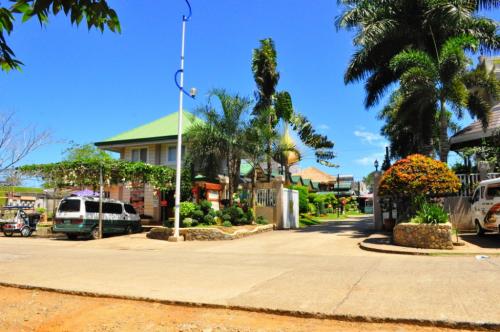
History
Cultural
Dipolog shared much of its cultural history with the ancient town of Dapitan to which it once belonged. It traces its beginnings long before the Spanish conquistadores set foot on the island of Mindanao. Dipolog was previously known as Tulwanan, in native language, literally meaning a settlement by the river. Its earliest settlers all belonged to the Subanen Tribe called Subanon or river people with established religion founded in animism. These Austronesian peoples descended from the malay ethnic group which roamed Mindanao and Southeast Asia via land bridges as early as 30,000 years ago[5] Later migrations of other tribes were made by water and took place over several thousand years.
By the 12th Century the Subanen settlers had colonized most of what is now Zamboanga Peninsula region. It was customary for tribes to establish their settlements at the mouth of large river systems due to the abundant food supply. However, due to frequent raids from seafaring Chinese pirates, they decided to move their settlements inland.
In the 14th Century, Tulwanan was established 6 kilometers inland, adjoining the river near the present day baragay center of Lugdungan.
In the 15th Century, settlers from neighboring Negros and Bohol islands established coastline settlements in Mindanao but suffered the same raids by Chinese pirates, prompting them to also move their settlements away from the coastline. They established another settlement in what is now called Sianib, a barangay of present day Polanco town, some twenty kilometers from the coast at Barrio Gulayon(Barangay Gulayon).
It was only in 1563 that the first recorded Visayan settlement of some 800 families from Bohol, led by the chieftain Datu Pagbuaya, landed in Mindanao and established a coastal settlement in what is now called Dapitan. This settlement was strong enough to repel the seafaring pirates of the Sulu Sea. As a result, Dapitan Bay was scene of many bloody conflicts between Pagbuaya's men and Chinese pirates.
Geography and Territory
Dipolog City is situated in the Northwestern part of the Province of Zamboanga del Norte.It is bounded on the North by Dapitan City, on the East by the municipality of Polanco, on the South by the municipality of Katipunan and on the West .
Its Original Territory in 1914 covered an approximate land area of 248,587 hectares under Act No. 302 of the Philippine Islands. It was substantially reduced in 1951 to the current 13,628 hectares, after two barrio's of Dipolog were converted into Municipalities of Polanco, and Pinan under Executive Order of the President No. 467, dated August 22, 1951.
Overland Transportation
* Integrated Bus terminal Complex
* Provincial Destinations
* Long Haul Route Network
* Manila, Iloilo, Bacolod, Davao, Cagayan de Oro, Pagadian, Ozamiz, Ipil, Zamboanga
* Medium Haul Route Network
* Rizal, Pinan, Manukan, Molave, Sindangan, Labason, Gutalac, Siocon
* Short Haul Route Network
* Dapitan, Polanco, Katipunan
* Mode of Transport
* City-wide
* Motorized tricycles
* Utility Transport
* Jeepneys
* Passenger Vans
* Mini-Bus
* Intra-Province
* Passenger Vans
* Commuter Bus
Sea Transportation
* Pulauan Port
* Shipping Services
* 3 Nationals
* 2 Inter-Islands
* 4 Island-Ferries
* Shipping Routes
* Dumaguete, Tagbilaran, Cebu, Iloilo, Manila
Administrative Subdivisions
Barangays
Dipolog City is politically subdivided into 21 barangays.
* Barra (Pob.)
* Biasong (Pob.)
* Central (Pob.)
* Cogon
* Dicayas
* Diwan
* Estaka (Pob.)
* Galas
* Gulayon
* Lugdungan
* Minaog
* Miputak (Pob.)
* Olingan
* Punta
* San Jose
* Sangkol
* Santa Filomena
* Santa Isabel
* Sicayab
* Sinaman
* Turno
Economy
The city hosts 17 commercial and rural banking establishments, not including the various lending institutions. A proposed branch of the Bangko Sentral ng Pilipinas will further strengthen the banking sector as Dipolog continues on its way to becoming a first class city, which is estimated to occur by 2009.
Source:
Wikipedia